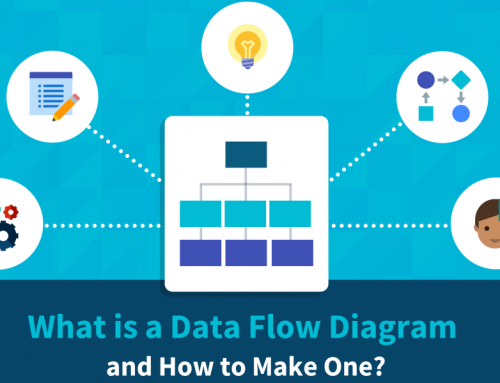Data Governance Strategy: 4 Basic Principles and 4 Key Areas
Currently, data governance for Internet companies is still immature, and there are key challenges, namely the lack of a clear definition of who owns or uses non-user content (such as logs or keywords), and how, when, and by whom the data is used. Internet companies urgently need to develop a data governance strategy to address this issue, thereby ensuring trust between platform owners and users and business success. In this article, we’ll introduce 4 basic principles and 4 key areas for data governance strategy.

Data Governance Strategy
4 Principles for Data Governance Strategy
Data governance strategy is built on fundamental principles that provide a set of guidelines and considerations for all strategies. Data governance requires an understanding of what policies need to be made, what roles and how those roles should be involved in the decision-making process to identify key data governance areas.
1. Consider All Participants
This principle enables Internet businesses to develop realistic data governance policies that should be communicated to all users. The participants of Internet enterprises are composed of platform owners and platform users. All participants play a key role in the data governance of Internet companies. The data governance of Internet companies needs to deal with complex relationships between multiple aspects. Therefore, every user deserves the same opportunity and availability as it leads to more engagement and ideas, which ultimately leads to new innovations.
2. Align with Corporate Strategy
Business goals affect the direction and design of data governance. To maximize the value of Internet companies, data governance goals should be consistent with business goals and higher-level governance goals. Revenue sharing, trust and roles are key functions of platform governance. Revenue sharing requires that platform owners should consider rewards for data contributors. Trust is considered a prerequisite for success, and in order to increase trust, high transparency of data usage is essential in data governance. A role in data governance refers to a form of data ownership with clear responsibilities. It allows Internet businesses to protect data and the rights of data owners/users.
3. Based on Different Conditions and Environments
The data governance strategy must be flexibly made based on the background of the platform. For example, Apple and Facebook clearly demonstrate different governance strategies in terms of control mechanisms. Apple’s goal is to provide high-quality service, so it is strictly controlled through human review. Apps are not allowed to collect user data, and advertising that uses user data is restricted. Facebook is loosely controlled, allowing users to enter anything without any restrictions. By allowing applications to collect user data, it leads to misuse and abuse of data, violating users’ privacy.
4. Cover All Types of Data
In the strategic process of data governance, Internet platform data comes from different data sources. May lead to unclear and incomplete governance policies. Ethical issues of data abuse and privacy violations arise. In order to reduce risks, data governance of Internet companies should consider how to establish a visible supply chain for all types of data in Internet companies.
4 Key Areas for Data Governance Strategy
1. Data Ownership and Access Definitions
Based on the core concept of who owns and uses data in Internet enterprises, the platform design enables Internet enterprises to clarify the roles, responsibilities and full rights to data of all relevant users. To support the implementation and maintain the integrity and consistency of the execution results, data ownership and access rights for all types of data need to be clearly defined and enforced. A policy model of data ownership/access must be developed using relevant regulations identified in the regulatory environment domain.
2. Regulatory Environment
External legal requirements and internal policies and contractual agreements must be identified, compliance objectives set and reviewed, taking into account what regulations, specific policies, standards and guidelines exist, and how the regulatory environment affects the use of data. The use of data should be confirmed where permitted by law. Data must be checked for compliance with open policy requirements to avoid bias or conflict of interest and maintain transparency for Internet businesses.
3. Contribution Measurement
Revenue sharing is one of the key governance concepts of Internet companies, and the contributions of participants determine the success of Internet companies. Internet companies should consider questions such as “What is the business value of data?” and “What rewards do data owners need for their contributions?” Encourage users to contribute and share the benefits of Internet business growth.
4. Data Use Cases
How to use data is the key to winning the market. To support the strategy, defining data classifications provides a good understanding of different types of data, as Internet businesses collect data from a variety of sources. Additionally, businesses need to decide on the appropriate data use case for collecting data based on business goals. To help the platform detect and prevent unauthorized data usage in the data supply chain, use cases must contain information on the types of data that can be used, and then based on the defined use case information to implement data usage monitoring for visible and reliable data usage.
Organizations large and small face similar data challenges in using data and require an effective, formalized data governance strategy. Data governance plans need to consider the collection, verification, access, and storage of data user and employee data as much as possible. More formal data governance strategies must be developed when legal or regulatory requirements dictate, when data systems and datasets are too large to navigate, or when business development requires an enterprise-level strategy.
Conclusion
Thank you for reading our article and we hope it can help you to have a better understanding of the basic principles and key areas for data governance strategy. If you want to learn more about data governance strategy, we would like to advise you to visit Gudu SQLFlow for more information.
As one of the best data lineage tools available on the market today, Gudu SQLFlow can not only analyze SQL script files, obtain data lineage, and perform visual display, but also allow users to provide data lineage in CSV format and perform visual display. (Published by Ryan on Jun 20, 2022)
2 Comments
Leave A Comment
If you enjoy reading this, then, please explore our other articles below:




[…] data strategy is an important part of an enterprise’s development strategy. It is a plan to maintain and […]
[…] Selecting data governance tools for unique needs is critical to an organization’s data governance strategy. Solutions and integrated data platforms on the market offer a wide range of capabilities, so the […]